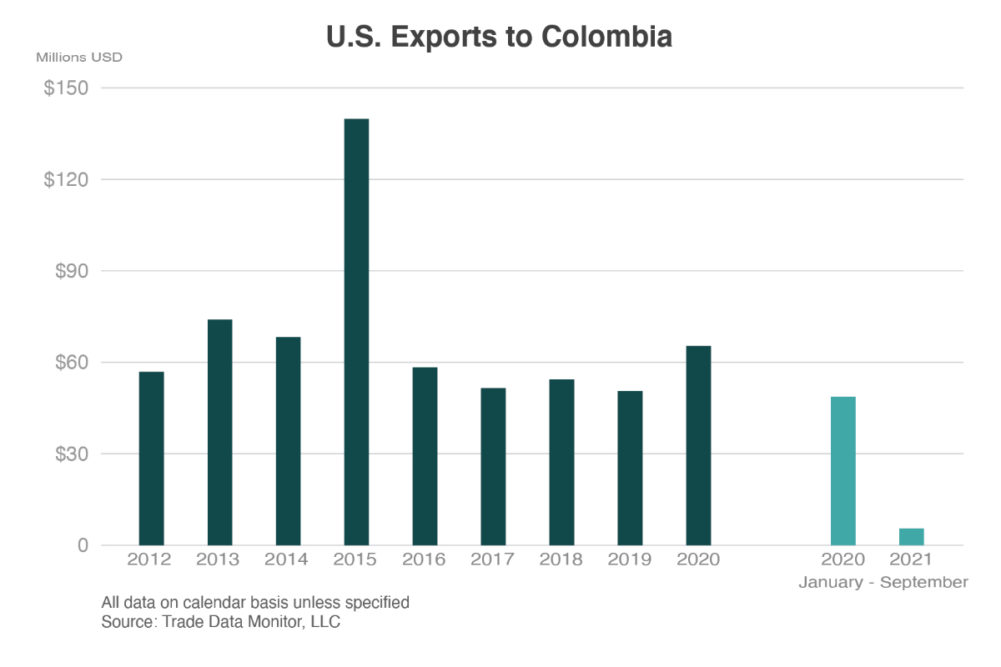WASHINGTON, DC, US — For the first time since it was enacted in 2012, US exporters did not fill the rice tariff-rate quota with Colombia.
Rice exports to Colombia declined to just $5 million through September, according to the Foreign Agricultural Service of the US Department of Agriculture (USDA). The significantly lower exports are a result of a larger Colombian crop and lower domestic prices as well as increased competition from South American exporters.
Prior to the United States-Colombia Trade Promotion Agreement (TPA), US rice exports to Colombia were only $3 million. The TPA allowed an initial 79,000 tons of US rice exports to enter duty-free compared to out-of-quota tariff rates of 80%. As a result, exports jumped to $57 million in 2012.
Since 2018, US rice exports have been primarily rough rice. In 2020, Colombia was the second-largest destination for US rough rice.
The TPA enabled growth in U.S. rice exports to Colombia and provides incentives on both sides to fill the TRQs specified under the TPA. The agreement allows US sellers to bid on a specific amount of the listed quota at auctions three times each year, awarding the quotas to the highest priced bidders. As motivation to fill the auction quotas, both US and Colombian rice industries evenly divide and distribute the auction proceeds to their respective industries for rice research.
The primary reason why the quota was not filled in 2020-21 was rising rice production in Colombia that led to lower domestic prices, USDA said. The record 2020-21 production was nearly one-third larger than the previous year, resulting from record harvested area and higher yields. Due to the record crop and the addition of ample carry-over stocks, domestic rice prices within Colombia have fallen.
After the listed annual TRQ is filled, additional exports face tariffs. Despite the high tariff rates, US rice has still been competitive for out of quota sales. However, Colombian domestic prices have trended downward over the past years and have begun to reach similar levels as the United States.
Other competitors have also obtained duty-free access to the market due to their own free trade agreements with Colombia. The most significant competitors for the United States are Peru and Ecuador.
Peru will have unlimited access in 2022 and Ecuador in 2027. US market share has been decreasing over recent years as imports have grown. However, despite these gains, the United States still accounts for the largest share of Colombia rice imports. The exception was 2016, when Colombia imported rice from non-traditional suppliers due to severe impacts from El Niño.






